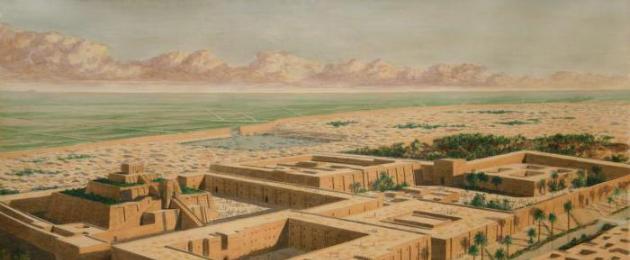If you have corrections or suggestions for this lesson, write to us.
Africa, distinguished by the richness and diversity of natural resources, due to deep political, social, economic problems considered the least economically developed continent. On a total area of Africa of 30.3 million square kilometers, there are 62 countries and territories, 54 of which are independent states. Of all the countries and territories in Africa, 10 are islands, 15 are inland, 37, located on the mainland, have access to the sea. African countries are divided into 5 sub-regions.
The countries of Northern, Western, Central, Eastern and Southern Africa differ among themselves in terms of geographical location, natural resources, number and average size of states.
The countries of North Africa, due to the presence of access to the Mediterranean and Red Seas, the Atlantic Ocean, have been closely connected with Europe and Asia Minor since ancient times. The subtropical and tropical climate of the countries of the subregion contributed to the specialization of agriculture in the cultivation of cotton, olives, grapes, and citrus fruits. Industry is primarily associated with the extraction and processing of mineral raw materials (oil, natural gas, phosphorites, iron ore). In addition, the light and food industries, processing agricultural raw materials, are well developed. Maritime transport plays an important role in the transport system. Especially, a large role in the development of maritime transport off the coast North Africa plays the Suez Canal. International tourism has also developed significantly.
The majority of the population are Arabs. In the course of centuries of history, developed areas of irrigated agriculture and nomadic animal husbandry, as well as centers of crafts, have developed in the countries of the subregion. The leading countries of the subregion in terms of social economic development Egypt and Algeria are considered.
The countries of West Africa are located between the Sahara Desert and the Gulf of Guinea, in the conditions of tropical deserts, savannahs and humid equatorial forests. This sub-region is one of the most densely populated in Africa. Very difficult ethnic composition population. During the era of colonialism, it was in West Africa that the slave trade was most actively conducted.
The modern appearance of the countries of the subregion is determined, first of all, by specialization in agriculture, which has been developed here since ancient times. The plantation economy in the countries of West Africa is mainly aimed at the cultivation of industrial crops. Agriculture is developing mainly in line with the monoculture of such products of export value as peanuts, cocoa, coffee, tropical fruits, and natural rubber. The leading industry is mining. The extraction of iron and uranium ores, bauxites, tin, oil, diamonds, and gold is mainly carried out. The state of Nigeria is an economically relatively developed country in West Africa.
The countries of Central Africa are located mainly in natural areas humid equatorial forests and savannahs. The subregion stands out for its rich reserves and diversity of mineral wealth not only on the mainland, but throughout the world. In addition, the countries of the subregion are rich in water, biological (especially forest) resources, the possibilities of which are not fully used. The countries of Central Africa export rough diamonds, copper, cobalt, manganese, tin, oil. The export value of forest resources is also great. The main industry is mining, but the manufacturing industry is also gradually developing. The ethnic composition of the population is dominated by the peoples of the Bantu family. The Democratic Republic of the Congo is the largest country in the subregion in terms of territory, population and economic potential.
For the countries of East Africa, the subequatorial and tropical climate is mainly inherent. Since ancient times, East Africa has had close trade ties with India and the Arab countries due to access to the Indian Ocean. It differs from other subregions of the mainland by its lower wealth in mineral resources. In this regard, much attention is paid to the use of other natural resources. Specializing in tropical agriculture, the countries of the subregion mainly export coffee, tea, coconut products, and spices. Some countries in the subregion also export minerals (mainly copper). Manufacturing industries are developing. Numerous nature reserves and national parks have become resources for the development of international tourism. The population of East Africa is a complex mixture of numerous peoples and tribes. Kenya stands out among the countries of the subregion with relatively high indicators of socio-economic development.
The countries of South Africa, at a considerable distance from Europe, Asia, America, have an advantageous economic and geographical position. Important international sea routes pass along their coast. Located in the tropical and subtropical zones of the Southern Hemisphere, the countries of South Africa have rich natural, especially mineral, resources. The Republic of South Africa is considered the most developed country not only in the sub-region of South Africa, but also in the entire continent. She is one of the largest suppliers different types minerals to the world market. At the same time, the manufacturing industry also occupies a prominent place in its economy. In the rest of the countries of the subregion, Agriculture. The ethnic composition of the population is diverse. A feature of the population of South Africa is the relatively high proportion of Europeans.
African countries have rich natural and socio-economic resources. However, the low level of socio-economic development of many countries, the peculiarities of the ethnic and religious composition of the population, the low standard of living and education, the mismatch of state and ethnic borders inherited from the times of colonialism are sources of acute geopolitical problems on the continent. The irrational use of natural resources, in turn, has led to acute environmental problems, especially desertification.
Lesson topic: Sub-regions of Africa.
Grade 11
The purpose of the lesson: Consolidate the studied material on Africa.
Tasks: 1. Give an idea about the features of North, Tropical Africa and South Africa.
2. Continue the formation of skills to independently obtain the necessary knowledge, compare, draw conclusions and generalizations.
3. Expand students' knowledge and teach how to create an "image of the territory."
Equipment: 1. Atlases, contour maps.
2. Additional material: - plan for the characteristics of subregions;
Task for vocabulary work;
Text to select data.
During the classes.
Organizational moment. Declaring the purpose of the lesson.
Today we will learn about the features separate parts Africa - its sub-regions, we will learn how to create an "image of the territory".
Repetition and reinforcement.
Answer the questions:
How many countries are in Africa?
What groups are African countries divided into by socio-economic development?
According to the features of the EGP?
What sub-regions are Africa divided into in § 2 of the textbook?
Why South Africa can define a special place?
Learning new material.
Work with the textbook atlas map.
Open the item "Sub-regions" of the textbook.
Draw conclusions in comparison with the division in the textbook: according to natural conditions and characteristics of the population, 5 subregions are distinguished.
2. Practical work on a contour map: divide Africa into sub-regions
3. Independent work in groups to the textbook: acquaintance with one subregion. As you work, complete the table for your subregion.
4. Vocabulary work using text to select data and a list of words by subregion.
5. Performance of work in groups.
Consolidation: work with the “Practice” item - task 1 difficulty.
Knowledge check: completing the task "Test".
Summing up the lesson. Grading.
vocabulary work
Appendix 1
Comparative characteristics sub-regions of Africa
Indicators
Northern
Africa
West Africa
East Africa
1. Territory (composition)
2. EGP of the subregion
3. Population: number
ethnic composition
4. natural conditions and resources
5. Economy: industry
Agriculture
transport
6. Problems and prospects
Appendix 2. Text for data selection
The most accepted in domestic science is the five-member structure of Africa zoning, distinguishing North, West, Central, East and South Africa.
The peculiarity of North Africa lies in the fact that, going to mediterranean sea closest to Europe. The region is located for the most part in subtropical and tropical latitudes, which determines the agricultural specialization in the cultivation of cotton, olives, citrus fruits, and grapes. Often North Africa is called the Maghreb, which is still not entirely accurate, since Egypt is not included in the Maghreb itself (from the Arabic word for “west”).
Western Africa covers the zones of tropical deserts, savannahs, tropical rainforests, located between the Sahara and the Gulf of Guinea. This region has the most complex ethnic composition. The current position of the region is determined both by agriculture, which is represented by both the production of both plantation cash crops and consumer crops, and by a relatively developed industry, primarily mining.
Central Africa occupies the middle part of the mainland. It is located in the zones of humid tropical and equatorial forests and savannas, which largely predetermined its economic development. It is one of the richest mineral resources region not only in Africa, but throughout the world. Unlike West Africa, Central Africa has a relatively homogeneous ethnic composition of the population. About 90% of all inhabitants are Bantu peoples.
East Africa is located in the subequatorial and tropical zones. She has access to Indian Ocean and has long maintained trade relations with India and the Arab countries. This is the second, after North Africa, region of the continent in terms of the degree of Islamization. mineral wealth East Africa are less significant, but the overall diversity of natural resources is great, which predetermines the variety of types of their economic use.
South Africa, in comparison with other regions, is the most remote from Europe, America and Asia. The economic core of the region is South Africa, the most developed country on the continent. South Africa is located in the tropical and subtropical latitudes of the southern hemisphere. Minerals stand out first of all from a wide range of natural resources. The vast majority of the population of the region are Bantu peoples.
Annex 3
vocabulary work
North Africa: Bedouin, zebu, yam.
West Africa: colony, mother country, protectorate, tribalism.
Central Africa: Animism, Sahel, Tsetse.
East Africa: sorghum, swahili, monoculture specialization.
South Africa: apartheid, Bantu, segregation.
References
1. Maksakovskiy V.P. "Geography" grade 10. Education. M., 2008
2. Maksakovskiy V.P. Toolkit on economic and social geography of the world. Grade 10. - M.: Enlightenment, 2004. 2nd edition
3. Atlas ""Economic and social geography of the world" grade 10. Federal Service of Geodesy and Cartography of Russia. M., 2008.
4. Contour map in geography, 10th grade.
5. Electronic textbook "Economic and social geography of the world". M., 2004.
This piece of land is often referred to as the "new breath of Islamic civilization", or the main springboard of the modern one. Indeed, these two subregions have a lot in common: Southwest Asia and North Africa. EGP, composition, socio-economic and cultural characteristics of the two regions will be considered in our article.
and Southwest Asia - what do they have in common?
Although they are located on different continents, they are perceived by many researchers as one large region. By and large, geographically they are separated only by a rather narrow and very salty Red Sea.
Why is North Africa and Southwest Asia so often singled out as one region? There are at least four very good reasons for this. Let's list them:
- the predominance in all countries of one group of peoples - the Arabs;
- common faith (Islam) and language (Arabic);
- The EGPs of North Africa and Southwest Asia share many common features;
- predominantly resource-based economies (not typical for all states).
The region we are considering at the junction of two continents is often also called the Arab or Arab-Muslim world. It covers the territories of more than two dozen countries with a total population of 350 million people.
Key cultural features of the sub-regions
At the very beginning, it is worth mentioning that it was these two regions that became the cradle for many of the famous ancient civilizations of our planet (Minoan, Sumerian, Egyptian and others). It was here that centers were formed that for a long time produced ideas that radically changed our world. It would also not be superfluous to recall that within Southwest Asia and North Africa, the three most important religions of the Earth were born: Islam, Christianity and Judaism.

Separately, it should be said about the Muslim religion. She miraculously managed to spread her influence over vast territories, from to Southeast Asia. At the same time, Islam brought turmoil and division into the once whole peoples, dividing them into warring camps.
Natural resources of sub-regions and their use
What else do North Africa and Southwest Asia have in common? Nature has awarded many countries in these regions with the richest deposits of gas and oil. Alas, not all states have learned how to use these resources rationally.
Many countries are simply pumping "black gold", receiving super profits and not at all thinking about their development prospects in the near future. But not everyone does this. A striking example of a successful and progressive country is the United Arab Emirates (UAE for short).
North Africa and Southwest Asia at present political map the world is 26 independent states. However, it would be a gross mistake to say that the boundaries of the macro-region we are considering coincide with the boundaries of these 26 countries. Moreover, its boundaries are very blurred and inconsistent.

What is special and unique about North Africa? EGP of the subregion, its Natural resources and economic structure will be discussed further. Which country in North Africa is the richest?
North Africa: PRG (briefly) and natural resources
The total area of this subregion is about 10 million square kilometers. km. Truth, most This area is occupied by the hot and lifeless Sahara Desert. North Africa is made up of seven countries (six of which are sovereign and one is partially recognized). This is:
- Morocco.
- Libya.
- Sudan.
- Tunisia.
- Algeria.
- Egypt.
- (SADR).
The North African PGP can generally be described as beneficial. The subregion has a wide outlet to the Mediterranean and Red Sea, as well as to Atlantic Ocean, which allows you to build constructive trade relations with the leading states of the world.
The bowels of North Africa are extremely rich in various types of minerals. Thus, deposits of oil, gas, iron and manganese ore, uranium, gold and phosphorites are most actively developed here.

Characteristics of the EGP of North Africa: pros and cons
Any country or region has both its advantages and disadvantages. Sometimes there are more pluses, and sometimes more minuses.
The EGP of North Africa is distinguished by several beneficial aspects at once. Firstly, the region has a wide outlet to the Mediterranean Sea. Through it they border on the European Union, which gives them an excellent opportunity to build close trade, economic and other relations with the most developed states of our planet. In addition, the European Union is the world's largest market for the sale of products.
The second advantageous aspect of the region's EGP is the presence of powerful mineral resource bases both within North Africa and in its immediate vicinity.
There are also shortcomings in the economic and geographical position of the region. First of all, it is worth noting that the population of North Africa is distributed extremely unevenly (due to natural and climatic conditions). The region does not experience a shortage in its "hot spots". Military mutinies, revolutions and terrorist attacks have already become quite familiar to many countries in North Africa.

Conclusion
The EGP of North Africa and Southwest Asia is quite profitable and promising. richest mineral resource base, good transport position and the availability of wide access to two oceans at once - all this lays good prerequisites for the intensive economic development of this macroregion.
It was here, at the junction of Africa and Eurasia, that many of the ancient civilizations planets. It is also where two of the three world religions originated. Finally, it was in this region that important discoveries that changed our world.
- In contact with 0
- Google+ 0
- OK 0
- Facebook 0








